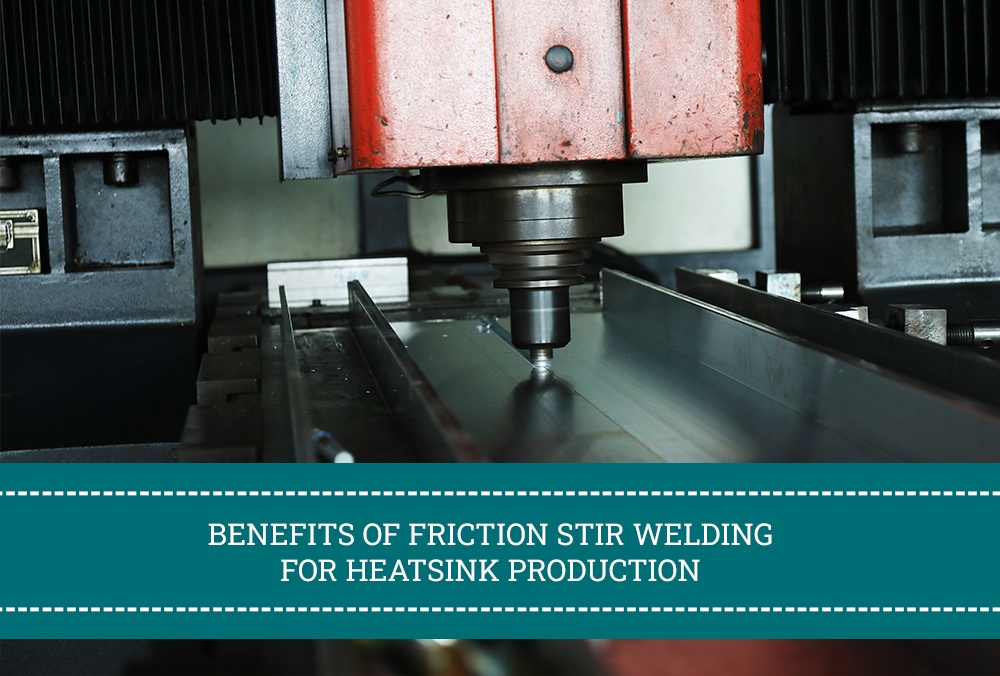Benefits of Friction Stir Welding for Heatsink Production
- Innovative Thermal Solutions

https://youtube.com/shorts/FdNuZn77iPw?feature=share
Heatsinks play an essential role in electronic devices by dissipating heat from high-power components, such as power convertors, batteries and processors. The thermal management of electronic devices is crucial for their reliability and longevity. Therefore, the manufacturing process of heatsinks requires a high degree of precision and consistency to produce high-quality products that meet the demands of the industry.
Friction stir welding (FSW) is a solid-state welding process that offers significant advantages over traditional welding techniques, such as TIG and MIG welding, in producing heatsinks. FSW has emerged as a popular choice for the manufacturing of heatsinks due to its unique properties and characteristics that result in high-quality joints. This article will explore the benefits of using FSW for manufacturing heatsinks.
- Strong and Durable Joints
One of the most significant benefits of using FSW for manufacturing heatsinks is the ability to produce strong and durable joints. FSW involves a rotating tool that is plunged into the workpiece, generating heat that softens the material. The softened material is then mechanically stirred to create a joint. Unlike traditional welding techniques, FSW does not involve melting the workpieces, which eliminates defects like porosity or cracking that can weaken the joint. The resulting joint is highly robust, which is critical as heatsinks are exposed to constant thermal cycling that can cause stress and fatigue. - Minimal Distortion
Another significant advantage of FSW for manufacturing heatsinks is that it produces minimal distortion. The heat-affected zone (HAZ) in FSW is much smaller than in traditional welding techniques, resulting in a joint that is less likely to warp or bend during the welding process. The smaller HAZ also helps ensure that the heatsink maintains its shape and structural integrity, which is crucial for proper thermal management. - Excellent Material Properties
FSW produces joints with excellent material properties, including good corrosion resistance, fatigue strength, and toughness. These characteristics are particularly important for heatsinks, which must withstand harsh environmental conditions and constant thermal cycling without degradation. FSW also produces a refined grain structure in the weld zone, which results in improved mechanical properties and a reduction in residual stresses. - Reduced Post-Welding Processing Requirements
FSW reduces post-welding processing requirements, saving time and reducing costs. Since FSW does not produce fumes or spatter, there is no need for post-welding cleaning or surface treatment. This results in faster processing times and lower overall costs, making FSW an attractive option for heatsink manufacturing. - Versatility
FSW is a versatile welding technique that can join a wide range of materials, including aluminum, copper, and other non-ferrous alloys. This flexibility makes it an ideal choice for heatsink production, as different materials can be used depending on the application. FSW can also join dissimilar materials, which is important for heatsinks that require different materials for their base and fins.
In conclusion, FSW is a highly beneficial welding technique for the manufacturing of heatsinks. Its ability to produce strong and durable joints, minimal distortion, excellent material properties, reduced post-welding processing requirements, and versatility make it a cost-effective and efficient option for producing heatsinks that meet the high demands of the industry. FSW is a reliable and innovative solution for the thermal management of electronic devices, and its benefits make it an attractive option for manufacturers looking to optimize their heatsink production processes.
